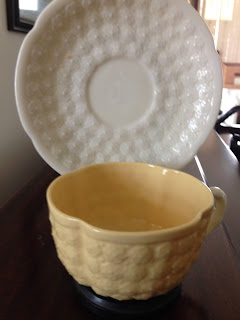
Every author will tell you that at some point in her writing life—and often countless times—she’s been asked where she gets the ideas for her stories. I’m a news junkie. I read two daily newspapers and watch both the local and national news each night, as well as various other daily and weekly news shows, including the ones hosted by comedians. Various plots and subplots in my books, as well many of the characters, are based on actual events and real people (with only the names changed to protect the innocent—or not so innocent.)
However, I don’t limit my reading and watching to the daily news. I also read op-ed columns, human-interest stories, and even advertisements for idea fodder. When I see something that intrigues me, I save it in my “Ideas” file.
For example, many years ago when I was still writing romance and chick lit, I’d forgotten to bring a book with me to a doctor’s appointment. The few magazines on the coffee table were several years old and totally not of interest to me. Out of desperation I began flipping through the pages of Road & Track. I am so not a Road & Track sort of girl, so you can imagine how desperate I must have been! Toward the back of the magazine, I came across an ad that touted an aftershave guaranteed to increase sexual attractiveness ten-fold. You better believe I ripped out that ad and filed it away in my “Ideas”. It eventually appeared in one of my early books.
Even the most unlikely reading material can stimulate a writer’s muse. While standing in line at the dry cleaner, I started reading the ads pinned to a bulletin board hanging on the wall. Most were for house painters and cleaning services, private tutors, and yard sales. But one ad stood out, intriguing me.
Someone was looking to sell a never-used, king-sized Ethan Allen bedroom set. The first book in my Anastasia Pollack Crafting Mystery Series was published in 2011, and I’ve been concentrating on writing mystery ever since. Back when I wrote romance, I would have conjured up quite different scenarios from the devious thoughts that now played around in my head.
Was the bedroom furniture up for sale because a wedding hadn’t taken place? Why had the wedding been canceled? Had either the bride or groom died?
Or was one of them murdered?
And if so, is one suspected of killing the other? By the time I inched my way to the front of the line, I’d generated a dozen likely plot scenarios, which I furiously jotted down as soon as I returned to my car. I haven’t used any of them yet, but they’re filed away in my binder. You’ll probably find one of those ideas fleshed out in one of Anastasia’s future adventures.
Handmade Ho-Ho Homicide
An Anastasia Pollack Crafting Mystery, Book 8
Two and a half weeks ago magazine crafts editor Anastasia Pollack arrived home to find Ira Pollack, her half-brother-in-law, had blinged out her home with enough Christmas lights to rival Rockefeller Center. Now he’s crammed her small yard with enormous cavorting inflatable characters. She and photojournalist boyfriend and possible spy Zack Barnes pack up the unwanted lawn decorations to return to Ira. They arrive to find his yard the scene of an over-the-top Christmas extravaganza. His neighbors are not happy with the animatronics, laser light show, and blaring music creating traffic jams on their normally quiet street. One of them expresses his displeasure with his fists before running off.
In the excitement, the deflated lawn ornaments are never returned to Ira. The next morning Anastasia once again heads to his house before work to drop them off. When she arrives, she discovers Ira’s attacker dead in Santa’s sleigh. Ira becomes the prime suspect in the man’s murder and begs Anastasia to help clear his name. But Anastasia has promised her sons she’ll keep her nose out of police business. What’s a reluctant amateur sleuth to do?
Buy Links Amazon
Kobo
Barnes & Noble
iBooks

Bio:
USA Today bestselling and award-winning author Lois Winston writes mystery, romance, romantic suspense, chick lit, women’s fiction, children’s chapter books, and nonfiction under her own name and her Emma Carlyle pen name. Kirkus Reviews dubbed her critically acclaimed Anastasia Pollack Crafting Mystery series, “North Jersey’s more mature answer to Stephanie Plum.” In addition, Lois is a former literary agent and an award-winning craft and needlework designer who often draws much of her source material for both her characters and plots from her experiences in the crafts industry. Website:
Newsletter sign-up:
Killer Crafts & Crafty Killers
Pinterest:
Twitter:
Goodreads:
Bookbub:























